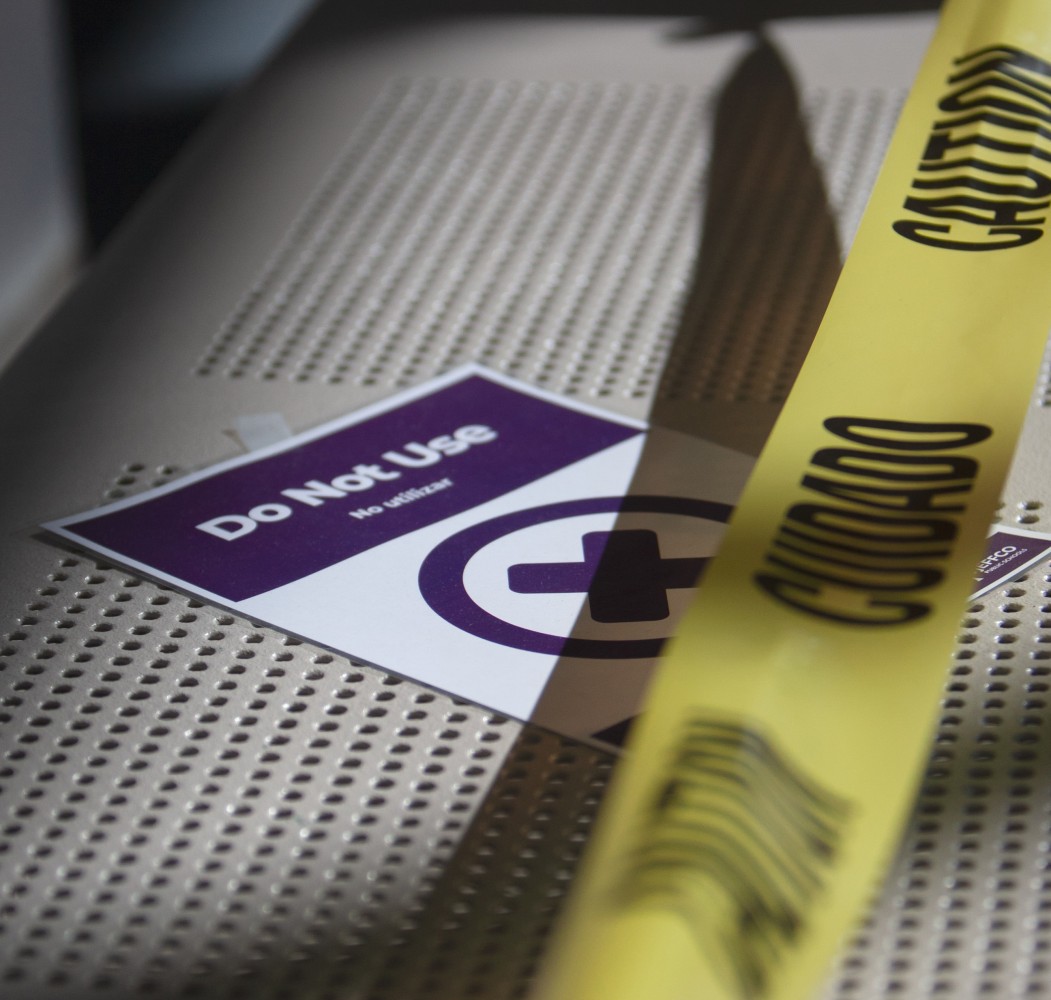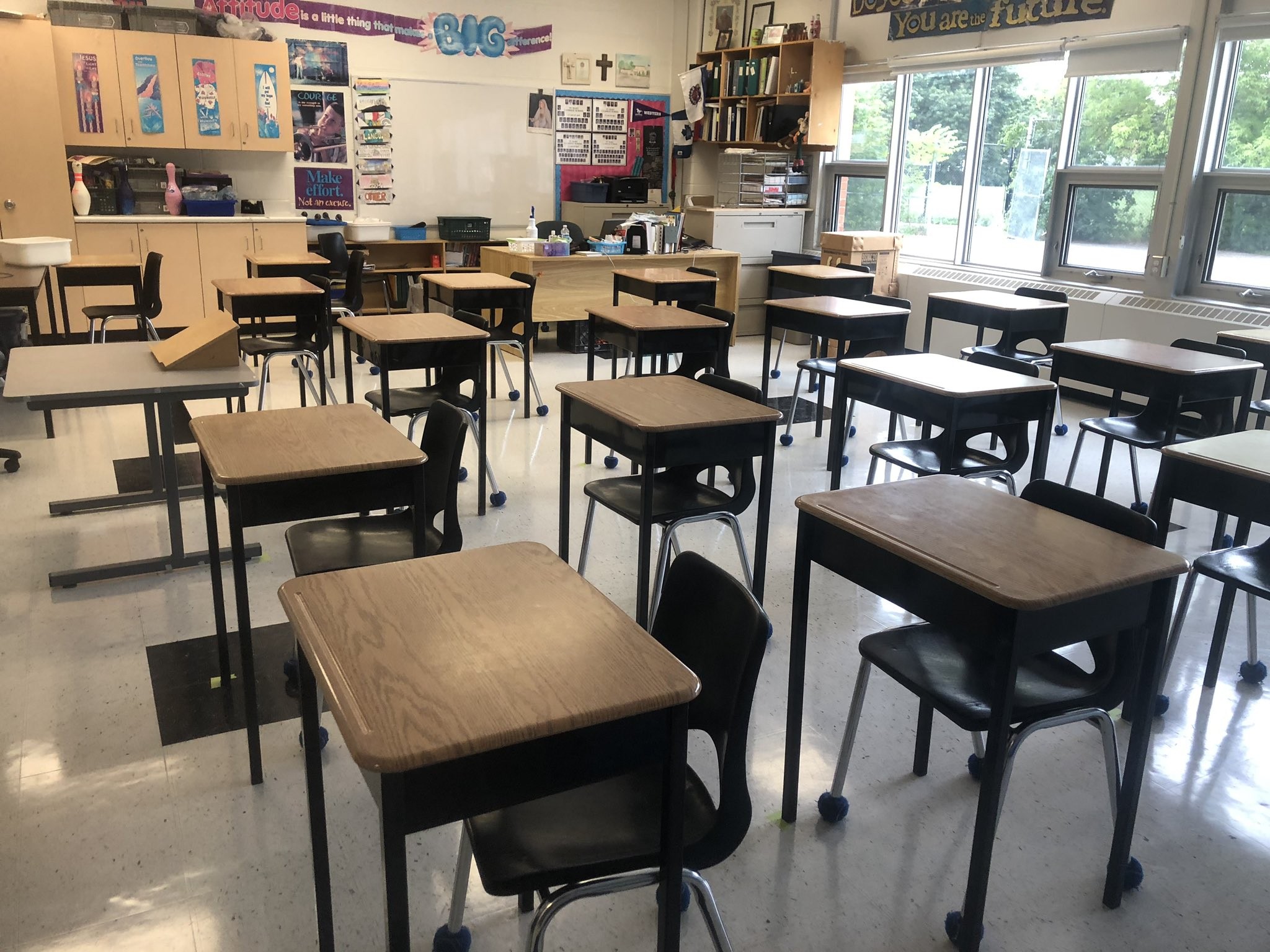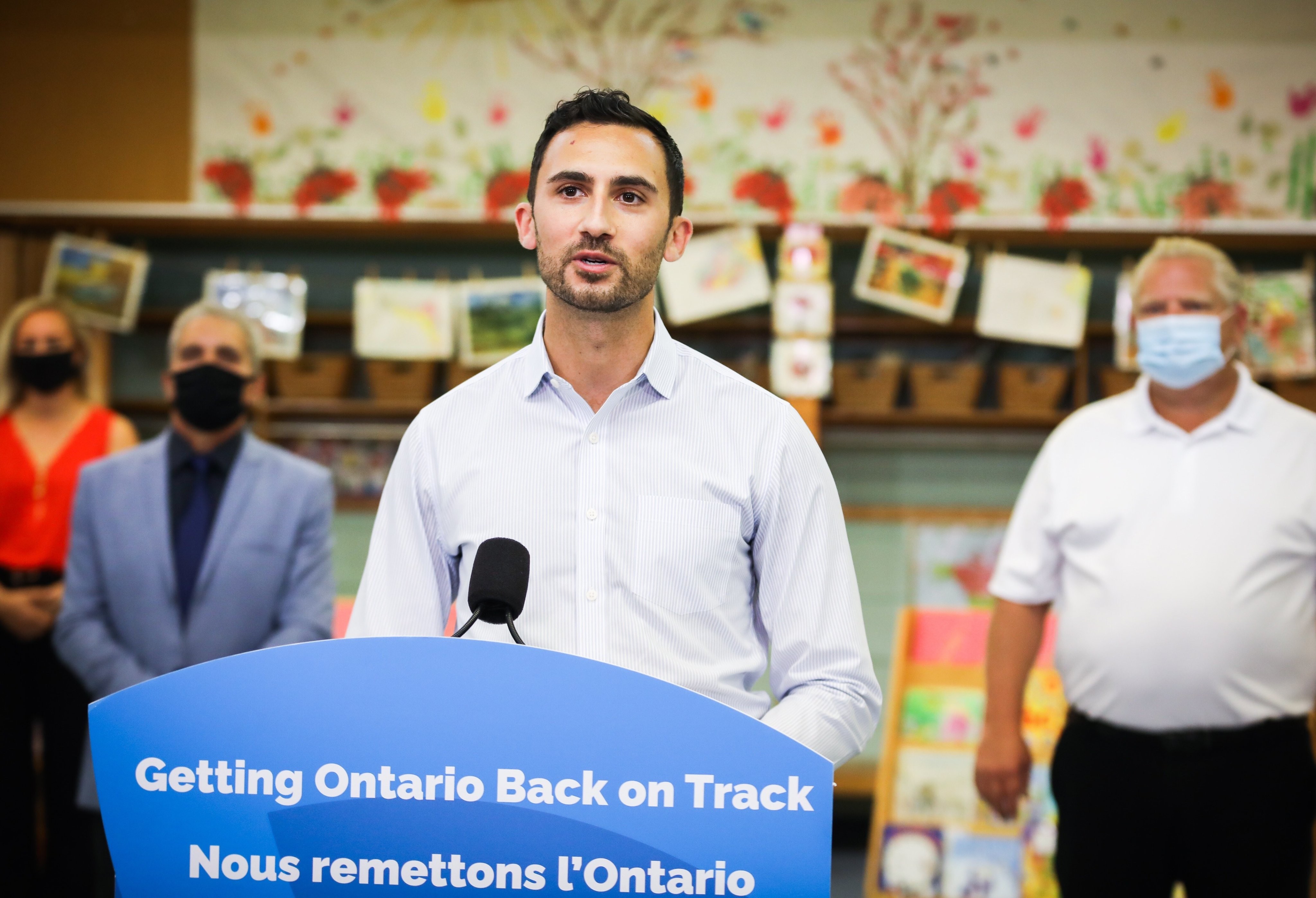
Teacher shortage, fears of Peel’s hotspot status & infections lead to 18 school closures, 38% of Ontario’s total
The situation in Peel’s schools — especially the Catholic board — is disquietingly worse than the province as a whole.
Patios and outdoor dining are now open in the region but a growing number of schools are closing.
With spring in the air and a return to warmer weather it can be easy to forget the pandemic that has stretched Brampton, Caledon and Mississauga to the breaking point for more than a year. One glance at the Peel District School Board or Dufferin-Peel Catholic District School Board websites serves as a reminder of the challenges the region continues to face.
Scrolling down the lists of pandemic-related closures the picture is worse than ever: closed classrooms, staff cases, student cases and school closures are being added daily.
Between them, Peel’s two major school boards list more than 360 active school cases. DPCDSB has more than 100 cases on its dashboard, while PDSB has 250 plus cases. With its lower case count, there are significantly more closures at DPCDSB where 12 schools were closed as of Tuesday, compared to three at PDSB. Another three schools within the region are also closed.

Since the reporting for this story (and the numbers used above) one DPCDSB school has reopened, and one additional PDSB school has been closed.
The high number of closures at DPCDSB is being attributed by its leadership to staffing issues, a knock-on effect of COVID-19 protocols, but not outbreaks in its classrooms.
This is demonstrated in some of the board’s closures. St. Valentines Catholic Elementary School was closed with one staff case, one student case and six closed classrooms. St. Matthews had one student case and two classroom closures, St. Daniel of Comboni had two student cases and one closed classroom.
“The vast majority, the overwhelming majority of schools closed in this province today are closed for operational reasons ... due to a lack of staff, and not because a public health unit has directed them to close,” Education Minister Stephen Lecce said this week in a scrum at Queen’s Park. “With that said, it still is a challenge. It still is unacceptable that schools are closed because of lack of staff. We're going to continue to find and work with our partners on the ground to make sure that there are qualified individuals who can work in our schools, care for our kids and keep them engaged in the curriculum, which is really priority number one through the pandemic.”

Education Minister Stephen Lecce
The operational issues, which relate to COVID-19 but are not specific outbreaks, mean seven percent of all DPCDSB schools are closed. Peel’s figures represent 38 percent of all Ontario school closures.
Of the 48 schools closed in Ontario, 33 are closed for operational reasons. Three schools in Peel have been ordered to close by public health, meaning that 20 percent of all COVID-19 related closures and 45 percent of all operational closures are in Peel.
Only nine percent of Ontario’s schools are located in Peel Region.
A letter to parents at DPCDSB outlined how teaching shortages are leading to school closures.
“The temporary absence of so many staff due to self-isolation precautions, combined with the unprecedented levels of absenteeism among staff, and significant challenges in securing Occasional Teachers to provide staffing relief in the short term, has placed immense pressure on our ability to provide safe supervision and to maintain delivery of in-person education in some schools,” DPCDSB director of education, Marianne Mazzorato, wrote in a letter to parents Monday. “On a daily basis, we find ourselves unable to fill almost 50% of all teaching absences in the elementary panel, because not enough occasional teachers are accepting jobs to fill in for absent teachers.”
Bruce Campbell, general manager, communications and community relations, told The Pointer the letter was “in no way intended to disparage teachers” and instead designed to tell parents that staffing, rather than COVID-19 outbreaks, was the root cause of the alarming number of closures.
“This was necessary because some parents believed that the transition to remote was due to a COVID outbreak at the school, which is not true,” Campbell said. “Therefore, the letter was issued to explain the temporary transition to remote only learning being due to challenges we are having with absenteeism and securing occasional teachers.”
Changes to the safety protocols introduced when students returned to in-person classes have led to more staff self-isolating, DPCDSB says. It now includes those who have been in limited contact with a class suspected of being exposed to the novel coronavirus or a variant, such as vice-principals, support staff or special educators.
The board says this has increased the number of absent staff resulting in not enough teachers to supervise in-person classes safely. Throw in absences from teachers who may be sick or unwilling to work in-person and the board is struggling with ongoing staffing issues.
“The school closures are due to a variety of issues, including the lack of government support,” Maria De Berardinis, Dufferin-Peel Secondary Unit union president, told The Pointer. “The implication that school closures are the result of a lack of occasional teachers is hugely misleading. School closures are happening because we work in a hotspot and the measures in place are not adequate to keep COVID out of schools and to keep our schools safe.”
For teachers on the occasional teaching list, there is no requirement for board loyalty. De Berardinis says occasional teachers are opting to work at other boards and avoid the dangers associated with Peel’s hotspot status.
“We have challenges with the existing teacher complement,” Lecce added. “Granted, it's 3,000 plus more teachers. But even today, we still have challenges filling those voids. So we're going to have to continue to work and find any innovative solution to do it. And we hope that the Ontario Teachers Federation will expeditiously approve the proposal and get more of these teachers working.”
Peel’s school staffing and COVID-19 issues come in the context of a region that continues to be overlooked for vaccine distribution. On Monday, Solicitor General Sylvia Jones, also the MPP for Dufferin-Caledon, said that Peel had not been forgotten, but the figures suggest otherwise.
Data from Monday show Peel had administered just 6.7 percent of Ontario’s vaccine doses. The Region is home to 10.5 percent of Ontario’s population, with its demographics trending younger than some other areas.
“The Ministry of Health and Public Health Ontario makes decisions about appropriate thresholds for consideration of remote learning across Ontario,” a spokesperson for Peel Public Health said. “Decisions to close for operational reasons are made by the local school board in consultation with the impacted school. We continue to work closely with our school board partners and monitoring the trends and will make recommendations accordingly.”
Email: [email protected]
Twitter: @isaaccallan
Tel: 647 561-4879
COVID-19 is impacting all Canadians. At a time when vital public information is needed by everyone, The Pointer has taken down our paywall on all stories relating to the pandemic and those of public interest to ensure every resident of Brampton and Mississauga has access to the facts. For those who are able, we encourage you to consider a subscription. This will help us report on important public interest issues the community needs to know about now more than ever. You can register for a 30-day free trial HERE. Thereafter, The Pointer will charge $10 a month and you can cancel any time right on the website. Thank you.
Submit a correction about this story


